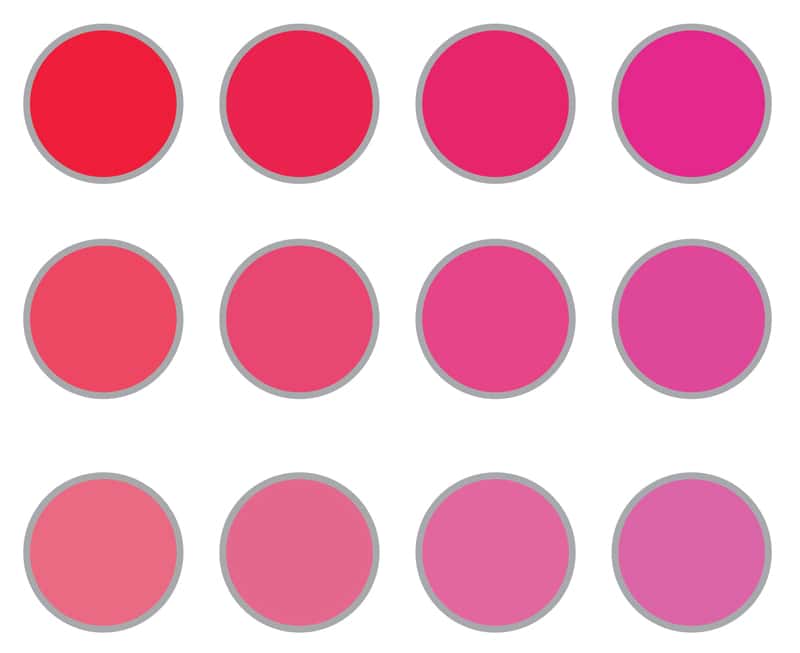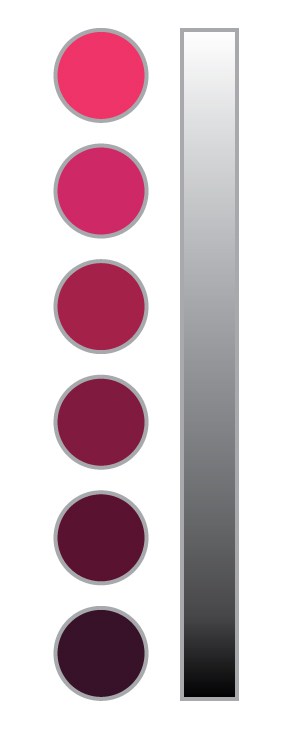The relationship between color and value is key in understanding ruby’s quality-value matrix.
As a ruby’s color intensifies or fades, the value of it goes up and down. The redder the color, the higher the value climbs. The purpler, pinker or browner it gets, down goes the price.
Ket to understanding this, is a reminder of color science—that color us a combination of hue, saturation and tone. Firstly lets have a quick look at hue and and saturation in Figure 1.1.
figure 1.1 Hue & Saturation In Ruby

HUE: Moving from the left-to-right in the top row we go from a pure red in the row’s first circle to a purple hue on the 4th circle on the right. This a transition in ‘color hue’
SATURATION: Moving from top-to-bottom in the left-hand-column we see the pure red starts to lose its intensity and fades to a pink.
The redder the hue, and richer or more intense the saturation the higher the value of a ruby.
Figure 1.2 Ruby’s Tone & Darkness

TONE: Moving from top-to-bottom in this vertical-column, we go from a pure red in the first circle to a nearly black tone by the 6th circle at the very bottom. These are the ‘tones’ of darkness being added to any position of hue-and-saturation.
Regarding ruby, the darker the tones, the lower the values. The dark of rubies tend to have iron as part of their chromophoric makeup, and the very darkest tones associated with the 3rd and 4th ruby-tone-circles are the most common in Madagascsan and Thai origin rubies.